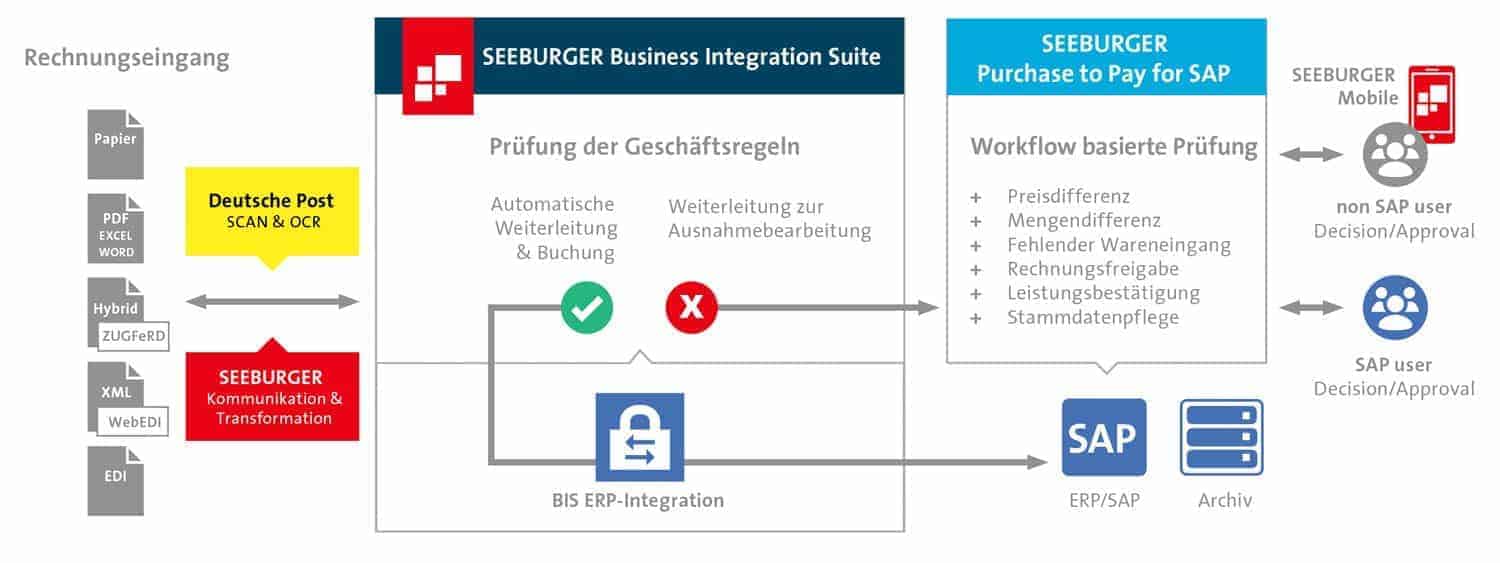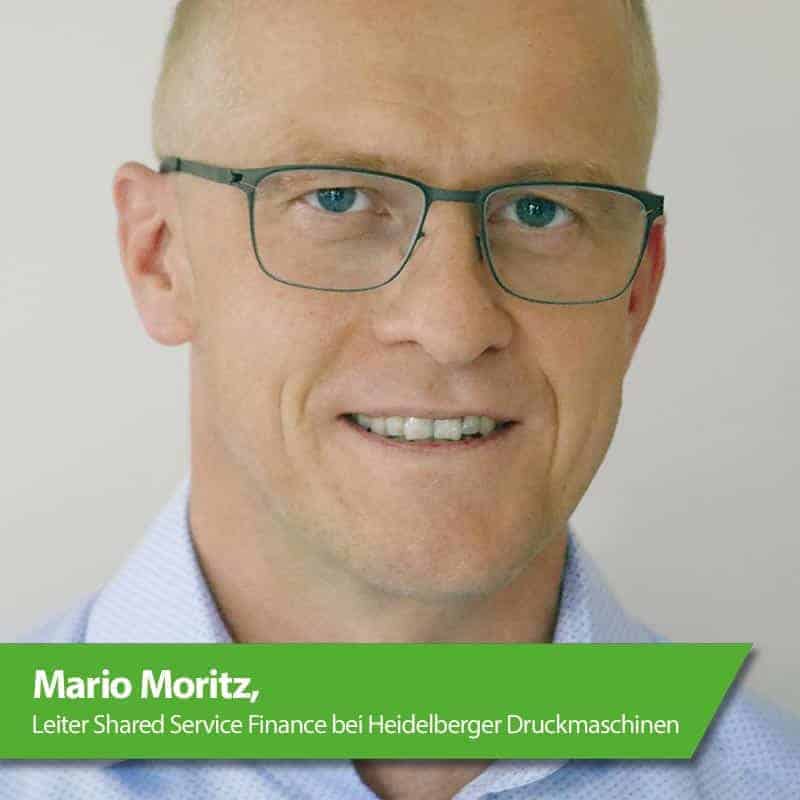Accounts Payables 2.0


Heidelberger Druckmaschinen is the world's leading company in the print media industry and most recently achieved consolidated sales of almost 2.5 billion Euro with a total of around 11,500 employees.
The company, which has 250 locations in 170 countries around the world, has set itself the goal of driving forward the digital transformation of the company and the industry in order to be able to address the high-growth customer segments with the right business models and products and services in the future.
In this context, the global sales and service network will be geared to customers' digital challenges under the motto "Heidelberg goes digital.
For years, Heidelberg has relied on application solutions from SAP to manage its own processes. An important digitization project for Heidelberg called "Accounts Payables 2.0" (AP) for end-to-end international electronic invoice processing has now been largely completed.
"The starting point for AP 2.0 were various ideas for optimizing and automating accounts-payables processes that could not be implemented with the existing workflow solution. These ideas were concretized and resulted in an implementation catalog as optimization focal points."
reports Mario Moritz, Head of Shared Service Finance at Heidelberger Druckmaschinen AG.
Roughly speaking, three fields of action were defined within the framework of AP 2.0: firstly, incoming documents with a uniform process for paper, EDI and e-mail/PDF invoices as well as future security for further electronic formats; secondly, workflow with dark entries, in particular also in connection with OCR at item level, passive approval, multi-stage sequential approvals with automated execution of defined workflow processes; thirdly, auditing with system-supported sales tax audits, automated approval processes and releaser determination on the basis of company guidelines as well as mobile approvals.
After the concept phase, Heidelberg set about selecting a suitable provider as a general contractor who would be responsible for receiving all invoice formats, including invoice workflow processing. With this provider, the aforementioned optimizations were to be put into practice on the basis of defined criteria.
SAP partner Seeburger was chosen as the company that best met the criteria from Heidelberg's point of view.
The decisive factors were, in particular, the technology know-how, experience in business integration and electronic data transfer and exchange, internationality, and extensive SAP business integration experience with special solutions "for SAP"; likewise, the fact that Heidelberg was able to fall back on an overall solution that could be scaled at any time and used flexibly to meet the necessary requirements.
The "plan-build-run" including fine-tuning took just under a year, with the first project step being to implement AP 2.0 for Germany. The international rollout then followed on the basis of this implementation.
According to Heidelberg, "There were challenges that had to be overcome in the project. These included standardizing processes across national borders and managing the complexity of integration.
Master data analysis and cleansing, as an essential prerequisite for dark bookings, also required greater effort than initially thought." The fine-tuning involved technical, organizational, process-related and country-specific points.
Deutsche Post was (and still is) involved in the project as a scan-and-capture service provider for scanning/OCR docking, including data record preparation for further processing. There is close coordination between Heidelberg, the scan-and-capture service provider, and Seeburger.
AP 2.0 is now in use in over 24 countries in Europe, America and Asia. So far, 38 company codes (including China) have been connected. And the document volume is huge:
Every month, Heidelberg processes around 23,000 paper and PDF invoices. 70 percent of invoices are received as e-mails with PDF. A significant proportion of these come directly from suppliers.
On the other hand, supplier invoices are scanned locally in Heidelberg branches or sites using multifunction devices or fed into the process via Scan2email. In addition, there are around 33,000 EDI invoices per month.
The linchpin of AP 2.0 from a process and data perspective is the Business Integration Server (BIS) and proven processing and workflow add-on solutions from Seeburger for SAP. They are used by Heidelberg as cloud solutions running in the Seeburger cloud data center in Karlsruhe.

If a digitized invoice prepared according to the requirements is uploaded by a national company, a data record is immediately created in BIS and the data record then flows automatically into SAP. This can result in automatic postings in SAP MM/FI. Provided that the data record complies with the specified business rules.
One focus of the Seeburger solutions used is on exception handling. And this is done manually and automatically (according to appropriate rules). For example, when price differences between the order and the invoice are involved.
Or quantity differences or a missing goods receipt. Heidelberg can also use it to carry out invoice releases or service confirmations, as well as master data maintenance. Invoice releases can also be made via mobile devices (also, if necessary, for non-SAP users).
According to Heidelberg, AP 2.0 has demonstrably increased the level of automation and process harmonization in invoice processing throughout the company.
And - a key aspect for Heidelberg - implemented a uniform Accounts Payables standard process as an essential prerequisite for expanding the global SSC organization.
"The overall system is designed in such a way that scaling is possible at any time. Digitization and thus bundling was an important lever here. For the company, this has the great advantage that rollouts can also be carried out in smaller branches, regardless of the region of the world, with a reasonable amount of effort.
This means that digitization and automation also took place in smaller countries that would otherwise have to do without such a solution."
Moritz explains.
The adaptability of the system is also a key success factor, as it is increasingly possible to serve other required channels and formats, such as ZUGFeRD or Peppol.
Another advantage is that AP 2.0 enables different process participants (from accounting, controlling or purchasing) to access each individual invoice for clarification or analysis purposes - in Germany, but also elsewhere in the world.

In addition, it is possible to optimize cash management or cash discount benefits on the basis of AP 2.0. It was also envisaged from the outset to achieve cost advantages with the use of AP 2.0.
After all, according to studies, the processing of a paper-based invoice, including transaction costs, costs a little more than four euros in total. In contrast, the costs for digitized invoice processing (e-invoicing) are in the cent range.
In addition to the cost savings, Heidelberg has also benefited from the increased transparency and quality of invoice processing.
Transparency, in turn, makes it possible to identify and exploit further potential for process automation, such as its expansion of dark bookings.
"Incidentally, these effects resulting from the process harmonization pursued worldwide were not initially expected to the extent"
it says.
The AP 2.0 project at Heidelberg shows how a global digitization project can be successfully implemented and ignite a positive impact. Reducing routine operational activities and focusing only on the exceptions transformed work in favor of greater efficiency and effectiveness.
Today, employees are involved in a continuous improvement process that takes a broader view - in line with the motto "Heidelberg goes digital".






